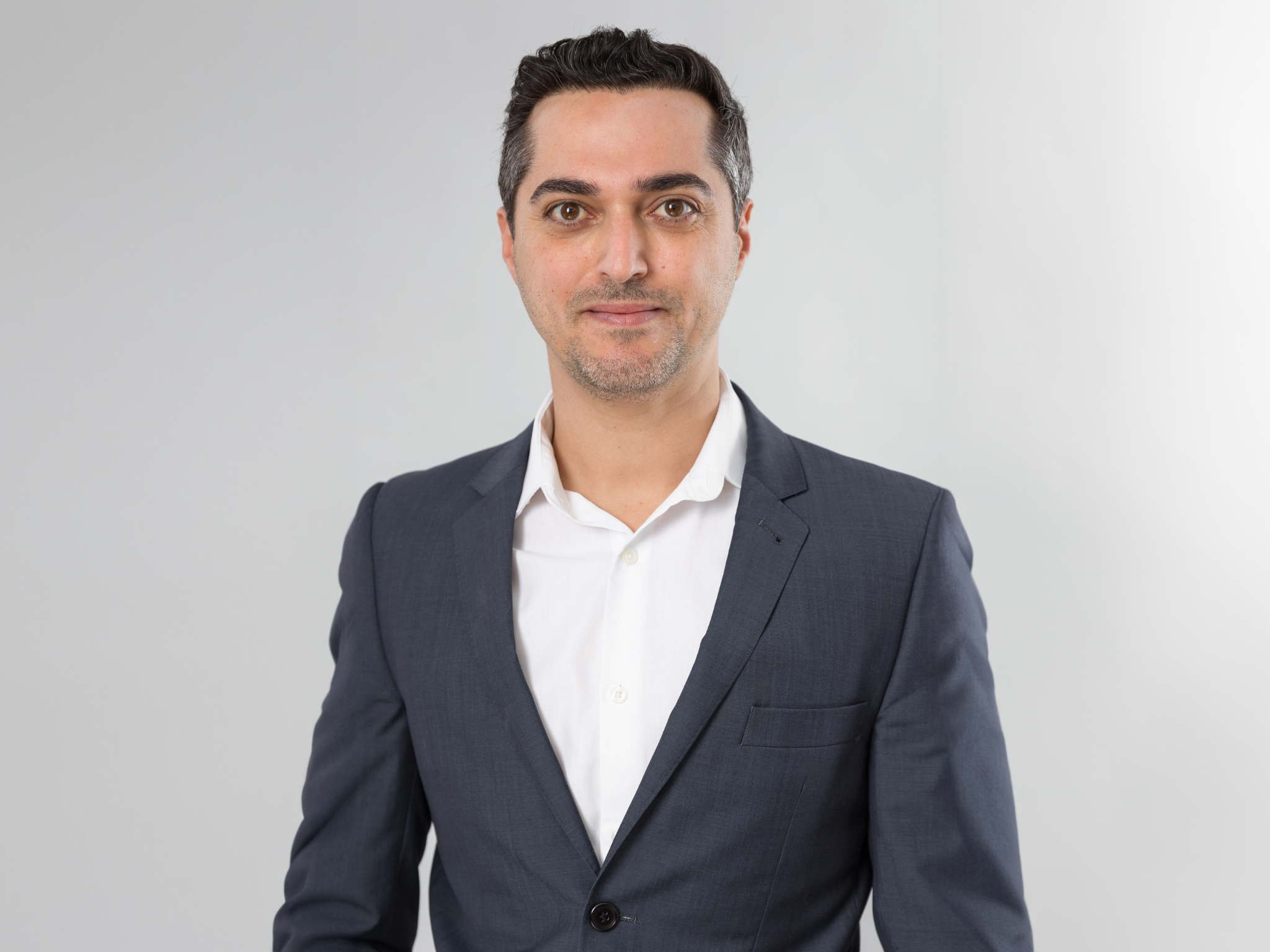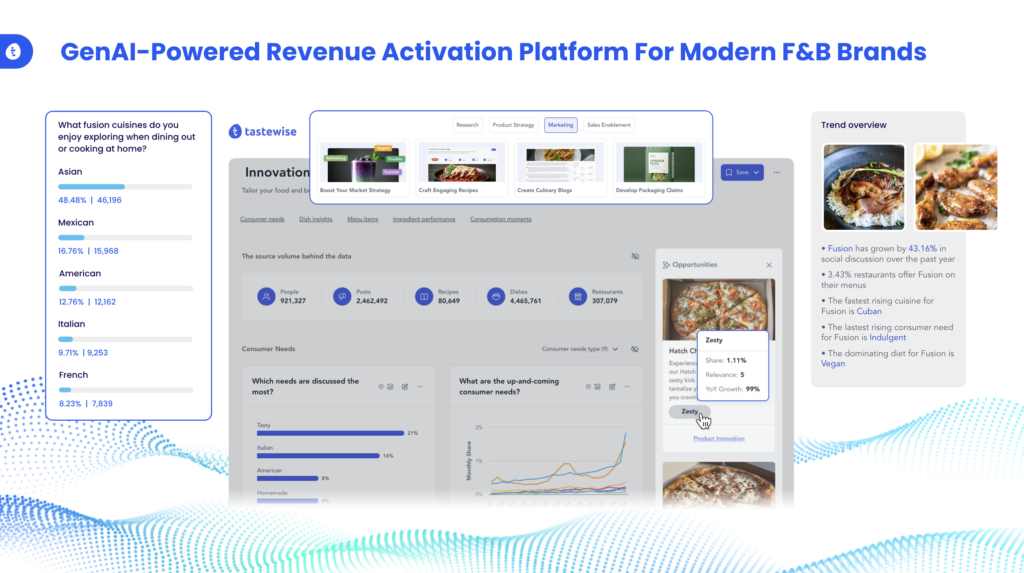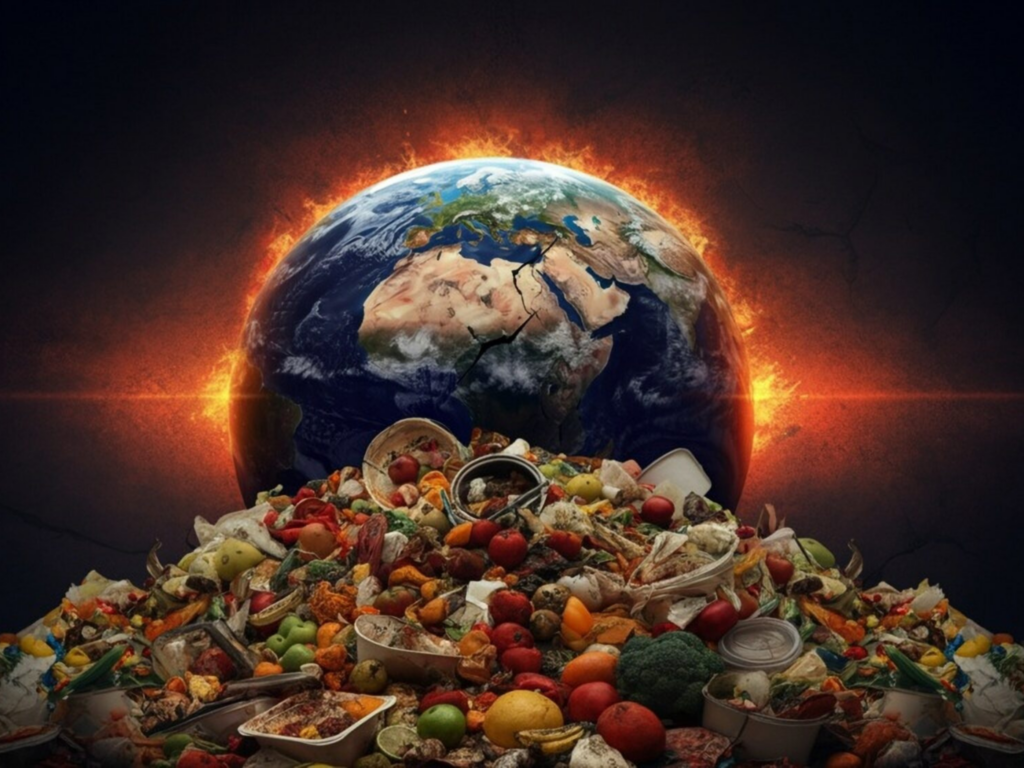
Can artificial intelligence help companies cut food waste and advance one of the most easily achievable climate solutions? This platform is betting on it.
Food waste costs the Earth up to five times more than the aviation industry.
Flying less is an obvious solution to fight climate change, but wasting less food might just be the easiest. Yet, in the US, food waste hit a four-year high in 2024, and 41% of this came from food businesses, according to environmental non-profit ReFED.
While many companies have announced goals to lower food waste, there are several key themes that will dictate the food waste fight in 2025, according to ReFED. That includes inflation, GLP-1 drugs like Ozempic, COP30, and artificial intelligence (AI).
“The food system will be significantly impacted by artificial intelligence. A handful of food waste solutions are already utilising AI to analyse data and generate valuable insights to drive greater reductions in waste,” ReFED executive director Sara Burnett told Green Queen in February.
“Machine learning, a subset of AI, has the capacity to process significantly more data than a human and can, for example, make predictions like how many apples would sell on a rainy day in October in Boston based on past trends.”
One company jumping on this is Tastewise, an AI-led platform helping companies lower food waste by analysing real-time insights to tell companies what consumers really want. The company’s co-founder and CEO, Alon Chen, explains that it can often take brands anywhere from 12 to 24 months to develop and launch new food products.
By the time these hit the market, consumer preferences may already have shifted, which results in a mismatch between what they’re looking for and what’s on the shelf. Brands launch products with low demand, retailers overstock, and restaurants misjudge preferences, according to Tastewise, which estimates that nine out of 10 product launches fail and lead to massive amounts of waste.
The company works with industry giants like Nestlé, PepsiCo, and Campbell’s to help devise in-demand products and battle food waste, informed by analysis of over 75 billion social media posts, a trillion online recipes, and a trove of reviews, grocery, and restaurant data.
We spoke to Chen to find out more about how Tastewise works, and its impact on the food waste fight.
This interview has been edited for clarity and concision.

Green Queen: How did you develop your AI platform? And how does it work?
Alon Chen: The idea of Tastewise surprisingly came to me during my mother’s Shabbat dinner. I noticed that everyone in my family had different diets, nutrition plans, and food preferences. For my mother, who always cooks incredible Shabbat dinners and invites the whole family, this became a real challenge. She had to keep track of everyone’s evolving dietary needs, while still creating a meal that brought us all together.
One week, she’d prepare a traditional dish with chicken, only to realise there were vegetarians at the table. Another time, she’d serve rice, forgetting that some family members were following a keto diet. The frustration of trying to accommodate everyone started to take a toll.
That’s when the idea struck — this wasn’t just a challenge for home cooks; it was a much bigger issue for the entire food and beverage industry. If even a home-cooked meal required so much adaptation, how could businesses effectively keep up with ever-changing consumer preferences? That realisation was the spark that led to Tastewise.
Nowadays, Tastewise continuously mines tremendous amounts of online data – millions of social media posts, online reviews, online recipes, and restaurant menus – globally to reveal emerging food and beverage trends and track current consumer eating habits with high accuracy.
GQ: Could you walk us through how a company can cut food waste using your platform’s insights? What can AI do that humans can’t?
AC: AI applications across all of its verticals (i.e., food retail, foodservice, and food manufacturing) can have a powerful cumulative effect on addressing the food waste issue.
Tastewise’s AI-powered insights help food brands, manufacturers, and restaurants make data-driven decisions that reduce waste at the source. By analysing real-time consumer preferences, emerging trends, and ingredient demand, Tastewise enables businesses to develop products and menus that align with actual consumption patterns, minimising surplus and optimising inventory, while ensuring offerings resonate with today’s consumers.
For retailers navigating rapidly shifting consumer preferences, Tastewise provides a crucial advantage, too. Its predictive insights help businesses anticipate future demand, allowing them to develop private-label products that align with evolving consumer needs.
Beyond product development, these insights also guide retailers in optimising shelf placement — strategically positioning products that consumers perceive as complementary next to each other to boost sales and inspire usage.
This is especially critical in an industry where product development can take a year or more, yet many launches still fail to gain traction, resulting in wasted inventory. By refining product-market fit and marketing strategies before production even begins, Tastewise helps retailers reduce inefficiencies and prevent unnecessary food waste.
Restaurants, too, can leverage Tastewise to track emerging food trends, popular dishes, and ingredient preferences at speed and scale. With this intelligence, they can fine-tune their menus and introduce trending menu options to align with consumer demand, ensuring higher sales and less waste.

GQ: Have you worked specifically on food waste campaigns? Can you give us some examples of the impact?
AC: Currently, our focus is not on helping companies develop food waste campaigns, as this ultimately serves as a band-aid for a larger issue. The World Economic Forum has stated that the food and beverage industry is worth $10T, yet it results in over $19T in medical and environmental problems. Placing the burden on the consumer to resolve this vast, industry-wide issue would not be sustainable.
At Tastewise, our focus is to help consumer-priced goods companies, flavour houses, retailers, restaurants, and fast-food chains create products that consumers won’t waste. We base this on what they value, how they prefer to eat, which dishes or ingredients work in different eating environments, and what they’re discussing.
GQ: Is there a way Tastewise can help curb at-home food waste, too, given it’s the biggest culprit?
AC: While Tastewise cannot curb food waste by itself, what it can do is provide companies with the tools and the 360° view needed to create products that consumers won’t waste. Interestingly, a recent survey we ran on food waste found that specific foods and cuisines influenced nine times more respondents than convenience.
Ultimately, people are far less likely to waste food they enjoy. Here at Tastewise, we help decode trends, the needs behind them, and build new product concepts, flavours, and marketing to maximise consumers’ enjoyment of the product, therefore maximising revenue activation for the companies and minimising waste at the consumer level.
GQ: ReFed predicts GLP-1 drugs will have a significant impact on food waste. What’s your take on this?
AC: In June of last year, PwC’s GLP-1 Trends & Impact Survey stated that over 35% of Americans expressed interest in GLP-1 products. Since GLP-1 products have been shown to lower overall food consumption in users by 20-30%, there is the potential for a significant impact on food waste due to reduced at-home consumption.
GLP-1 has triggered major shifts in consumer behaviour, which we’re already observing, such as:
- GLP-1 users are replacing conventional snacking habits, leading to an increase in high-protein and fibre-rich foods.
- The traditional three-meal structure is fading, with breakfast and meal replacements on the rise.
- Carbohydrates are experiencing a resurgence, with bagels (+216% YoY) and tortillas (+212% YoY) indicating shifts in carb consumption.
This suggests that the rise of GLP-1 could create substantial opportunities to reduce food waste. However, if not managed properly, it may even result in increased food waste. Food and beverage companies must adapt to this expanding audience by employing strategies such as reformulation, adjusting portion sizes, and effective positioning to assist consumers in minimising waste.

GQ: What are the biggest trends you’re seeing this year around fighting food waste?
AC: With global economic turmoil at a high right now, what we’re seeing is that key food-waste-cutting trends include upcycled ingredients, root-to-stem cooking, nose-to-tail eating (in meat consumption), and smarter portioning based on real-time consumption data.
There’s also renewed interest in preservation methods like fermentation and transparent packaging that highlight waste-reducing efforts. These innovations cut waste and align with growing consumer demand for sustainable, ethical eating.
GQ: How does Tastewise work towards systemic shifts that fundamentally change the culture of throwing away food?
AC: Tastewise is equipping the food brands that feed the world with AI-powered consumer insights that enable smarter, more sustainable decision-making. By analysing fair amounts of data points – from menus and recipes to social media conversations, consumption patterns and purchasing behaviours – Tastewise helps businesses develop relevant products, anticipate demand more accurately, optimise restaurant menus, and align supply with real-time consumer trends.
This data-driven approach reduces overproduction and excess inventory – two key contributors to food waste. On a deeper level, Tastewise also supports a cultural shift by helping brands innovate around sustainability trends that resonate with consumers, such as zero-waste cooking, upcycled ingredients, and conscious consumption.
By empowering the food industry to act more intentionally at every stage – from product ideation to point of sale – Tastewise contributes to a broader transformation in how food is valued and managed, ultimately challenging the norm of waste and replacing it with efficiency and purpose.
GQ: A new study suggests that lowering food waste or packaged food use only has a minimal impact on the climate, unless supported by regulation. How important is the role of governments?
AC: While consumer choices matter, real change in reducing food waste and packaging impact demands more than good intentions – it needs structural support. Tastewise data shows most people cook at home, yet, less than 1% use food waste strategies. That’s a gap policy that can help close.
Governments play a vital role by enabling clear labelling, incentivising upcycling, and supporting recovery infrastructure. At Tastewise, we empower brands with fast, data-driven insights – but true scale comes when innovation meets regulation.
The post Tastewise: This Consumer Insights Platform Is Using AI to Help Food Companies Cut Waste – Here’s How appeared first on Green Queen.
This post was originally published on Green Queen.